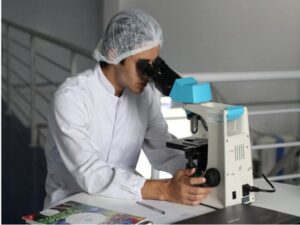Adani forms JV for marketing of green hydrogen in Japan
New Delhi, Sep 14 (PTI) Adani Group on Thursday said it has formed a 50:50 joint venture with Japanese conglomerate Kowa Group for sale of green hydrogen in Japan, Taiwan and Hawaii markets.
Billionaire Gautam Adani-led conglomerate is investing up to USD 50 billion over the next 10 years in setting up a fully integrated green hydrogen ecosystem in India. This includes the production of 1 million tonne of green hydrogen in the initial phase which will be ramped up to 3 million tonne later.
“Adani Global Pte Ltd, Singapore, a step-down wholly owned subsidiary of Adani Enterprises Ltd, announced a 50:50 joint venture (JV) with Kowa Holdings Asia Pte Ltd, Singapore for sales and marketing of green ammonia, green hydrogen and its derivatives. The JV will concentrate on marketing of products in Japan, Taiwan and Hawaii,” the group said in a statement.
Hydrogen is a clean energy source. It is mainly used in the refining and chemical sectors and produced using fossil fuels such as coal and natural gas. Green hydrogen is produced by using electricity from renewable sources such as solar, to power an electrolyzer that splits the hydrogen from water molecules.
Adani already is the largest renewable energy producer and for the green hydrogen project, it plans to expand its solar module manufacturing capabilities at Mundra SEZ in Gujarat to up to 10 GW per annum. The Mundra factory would manufacture metallurgical grade (mg) silicon, polysilicon, ingots, wafers, cells and the module itself that are used to generate electricity from solar energy.
Sea water will be desalinated before using its electrolyzers to produce low-cost green hydrogen.
“The JV with Kowa for green hydrogen marketing is a natural and strategic extension of Adani Group’s long-standing marketing and trading relationship with Kowa,” the statement said.
Adani New Industries Ltd (ANIL), the green hydrogen platform of Adani Group, is developing end-to-end solutions to produce globally competitive green hydrogen and its associated sustainable derivatives at scale.
“The first project of ANIL of 1 million metric tonne per annum (MMTPA) green hydrogen is being implemented in phases in Gujarat. The initial phase is expected to start production by FY2027. Depending on market conditions, ANIL aims to increase capacity to up to 3 MMTPA of green hydrogen in the next 10 years, with an investment of about USD 50 billion,” it said.
After hydrogen is produced, it can either be transported directly (which is a risky and costly affair) or converted to ammonia, often referred to as ‘green ammonia’.
Clean hydrogen can help decarbonise a range of sectors, including long-haul transport, chemicals, and iron and steel, where it has proven difficult to reduce emissions. Hydrogen-powered vehicles would improve air quality and promote energy security as it produces just water on being burnt in an engine.
ANIL is a wholly-owned subsidiary of the group’s flagship Adani Enterprises Limited (AEL).
“ANIL’s strategy is focused on development of an integrated hydrogen ecosystem with three business streams – manufacturing of supply chain products (i.e. solar- polysilicon, ingot, wafer, cell & module, wind turbine generator, electrolyzers and ancillary items), green hydrogen generation, and production of downstream derivative products (i.e. green ammonia, green methanol, sustainable aviation fuel and others),” the statement said.
The combined strength of Adani Group’s experience in renewable equipment manufacturing, setting up large scale generation projects, building grid infrastructure, and proven project execution capabilities gives it a significant competitive advantage while building the green hydrogen ecosystem in India, it said.
“ANIL is well positioned to realise its targets and provide green molecules and sustainable fuels at globally competitive cost. Mundra ports’ proximity to global supply chain enables export opportunity of green hydrogen and derivatives, especially considering availability of jetty for shipment of cryogenic products,” it added.






